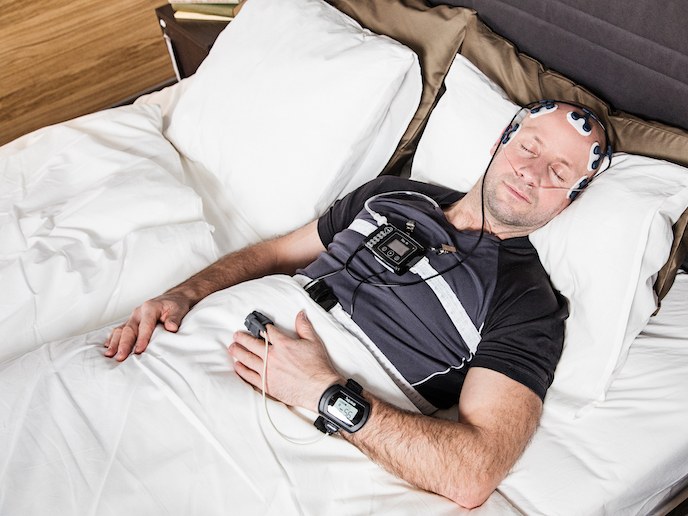Simple sleep diagnostics model foresees a good night's rest
Medical devices to analyse sleep are typically sold as a very expensive and specialised equipment. As a result, the use of sleep diagnostics in the medical field is limited to those who use the devices on a frequent basis and have enough funding to buy expensive capital equipment. The Sleep for All project, run by Nox Medical(opens in new window), has taken a two-pronged approach to alleviating this problem: they have developed a quicker, more simpler setup where patients place electrodes on themselves and a more flexible business model. A conventional electroencephalogram (EEG) involves electrodes being placed on the scalp. “This requires hours of work for a professional sleep technician and is typically done at a health care institute or a hospital,” explains Dr Halla Helgadóttir, Nox Research’s Clinical Research Manager. “Our new setup is designed to be attached by the patient themselves, using a new placement of electrodes.” A follow-up usability study revealed patients seem to have no problem with the system. “It didn’t show a higher failure rate than when a patient is hooked up in the conventional way by a professional,” she adds. In order to use an EEG in this new way, the team developed a method of automatically analysing the signals. Along with making the equipment more user-friendly, thereby saving the health care provider’s time, the project also focussed on developing a business model that would permit smaller providers to access such useful technology. They are offering the tools needed for sleep diagnostics as a service. In software marketing today, people pay for the use of software per use, be it by month, year or frequency. In Sleep for All’s model, general practitioners, dentists, and paediatricians, among others, can use the devices when needed and pay per use. “We want to open access to sleep diagnostics to more health professions.” This is an idea they have been exploring for a while, but EU funding has helped them step up a level. “The project contributed to a new way of analysing the flow signal. This gives the doctor more information about the patient, including a way of finding the cause of breathing problems during the night. All of which leads to more personalised treatment for the patient.” It’s not just doctors and patients who can benefit. The ability to rent the equipment, and the ease with which it can be used, means researchers can choose to use more devices than they could otherwise access were they to buy them. Unsurprisingly, researchers across the EU have been very interested in this aspect of Sleep for All’s system. The new EEG, self-applied setup and this disruptive business model break the bottleneck in data collection and harnesses the potential of machine learning in medicine. This takes us to the other innovation the Icelandic company is delving into – the use of artificial intelligence (AI) in sleep research. Nox Research already uses AI to score sleep stages in software and is working on more algorithms. One of them is the automatic arousal detector, the subject of a paper(opens in new window). Nox has also presented its work(opens in new window) at AI conferences in Europe, notably the Icelandic AI conference, the conference of the European sleep society and the Nordic AI conference.







